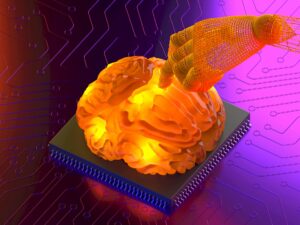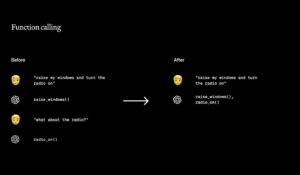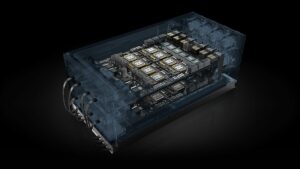Virtual Network Computing (VNC) is a technology that has revolutionized the way we access and control remote computers. With VNC, we can seamlessly connect to and control computers from anywhere in the world, as long as we have an internet connection.
The ability to remotely access and control computers has been a game-changer for businesses, allowing them to provide technical support and troubleshoot issues without having to be physically present at the location.
VNC has also opened up new possibilities for remote collaboration, enabling teams to work together on projects even when they are in different parts of the world. In this article, we will delve deeper into the world of Virtual Network Computing, exploring its history, technology, and various applications.
What is Virtual Network Computing (VNC)?
Virtual Network Computing is a technology that enables remote access and control of a computer over a network. It provides a graphical desktop sharing system that allows users to remotely access and control a computer’s desktop environment, making it ideal for remote technical support, remote collaboration, and other related tasks.
The VNC technology operates on the client-server model, where the VNC server runs on the remote computer, and the VNC viewer runs on the local computer. The server captures the desktop environment and transmits it over the network to the viewer, which renders the desktop environment on the local machine. The viewer then sends the user’s inputs to the server for processing.

The VNC technology was developed by the British company Olivetti Research Laboratory in the late 1990s and is currently maintained and extended by RealVNC Ltd. and the open-source community. It has become a popular tool for remote administration, allowing users to manage computers and servers from a remote location.
What is a Virtual Network Computing port?
A Virtual Network Computing port is a network port that is used by VNC servers and clients to establish a connection over a network. In computer networking, a port is a communication endpoint that is identified by a number, which is used by the networking protocols to direct traffic to the appropriate destination.
By default, VNC servers listen on TCP port 5900, while VNC viewers connect to the server on this port. However, the VNC protocol supports multiple ports for multiple concurrent sessions, allowing multiple users to access and control the same or different desktop environments simultaneously.
Reconceptualizing urban infrastructure in the age of 5G networks
In addition to the default port 5900, VNC servers can also listen on other ports in the range 5800 to 5899, which are used for VNC connections over the HTTP protocol. This feature is particularly useful in environments where only HTTP traffic is allowed, such as in a web proxy or firewall.
The VNC protocol also supports encryption of the VNC traffic, which is done using a secure variant of the VNC protocol known as VNC over Secure Shell (VNC over SSH). This protocol uses port 22, the standard port for SSH, for establishing a secure connection between the VNC server and client.
Which protocol does Virtual Network Computing use?
Virtual Network Computing uses its own proprietary protocol for communication between the VNC viewer and server. The VNC protocol is a simple, lightweight protocol that enables the transmission of graphical desktop environments and user inputs over a network.
The VNC protocol is designed to be platform-independent, meaning that it can be used to access and control computers running on any operating system, including Windows, macOS, Linux, and others. It is also highly extensible, allowing developers to add new features and functionality to the protocol as needed.

The VNC protocol operates at the application layer of the TCP/IP protocol stack and uses TCP as the underlying transport protocol. It uses a client-server model, where the VNC server software runs on the computer that is being remotely accessed, and the VNC viewer software runs on the computer that is being used to access the remote computer.
When a VNC session is initiated, the VNC server captures the desktop environment of the remote computer and transmits it over the network to the viewer. The viewer software then renders the desktop environment on the local computer screen, allowing the user to interact with the remote computer as if they were sitting in front of it.
The VNC protocol also allows for the transmission of user inputs, such as keyboard and mouse events, from the viewer back to the server. These inputs are then processed by the remote computer, allowing the user to control the remote computer from the local machine.
Advantages of Virtual Network Computing
Virtual Network Computing provides numerous advantages for remote access and control of a computer, including:
- Remote access and control of a computer from anywhere in the world with an internet connection.
- The ability to access and control a computer using any operating system that supports VNC, such as Windows, Linux, macOS, and more.
- Low bandwidth requirements, making it ideal for use over slow or unreliable network connections.
- The ability to share the desktop environment with multiple users simultaneously, allowing for collaboration and remote technical support.
- Secure communication through encryption, ensuring that sensitive information transmitted over the network remains confidential.
How does Virtual Network Computing work?
VNC uses a client-server model, where the VNC server software runs on the computer that is being remotely accessed, and the VNC viewer software runs on the computer that is being used to access the remote computer.
When a VNC session is initiated, the VNC server captures the desktop environment of the remote computer and transmits it over the network to the viewer. The viewer software then renders the desktop environment on the local computer screen, allowing the user to interact with the remote computer as if they were sitting in front of it.
The VNC protocol also allows for the transmission of user inputs, such as keyboard and mouse events, from the viewer back to the server. These inputs are then processed by the remote computer, allowing the user to control the remote computer from the local machine.

Best Virtual Network Computing software alternatives
While Virtual Network Computing is a powerful tool for remote access and control of a computer, there are several alternative solutions available that provide similar functionality. Here are some of the most popular alternatives to VNC:
Remote Desktop Protocol (RDP)
Remote Desktop Protocol (RDP) is a proprietary protocol developed by Microsoft that allows users to remotely access and control a Windows desktop environment. RDP is built into Windows and is available on most versions of the operating system. RDP offers a more seamless remote desktop experience than VNC, with better performance and more advanced features, such as support for multiple monitors and remote audio playback.
TeamViewer
TeamViewer is a popular remote access and support solution that provides a wide range of features and functionality. It is available on Windows, macOS, Linux, and mobile devices, and can be used to remotely access and control computers and devices over the internet. TeamViewer offers advanced features such as file transfer, remote printing, and session recording.
AnyDesk
AnyDesk is a lightweight and fast remote desktop solution that provides high-quality video and audio transmission over the internet. It is available on Windows, macOS, Linux, and mobile devices, and can be used to remotely access and control computers and devices. AnyDesk offers advanced features such as file transfer, remote printing, and session recording.
Enterprise cloud storage is the foundation for a successful remote workforce
LogMeIn
LogMeIn is a remote access and support solution that provides a range of features and functionality. It is available on Windows, macOS, and mobile devices, and can be used to remotely access and control computers and devices over the internet. LogMeIn offers advanced features such as remote printing, remote wake-on-LAN, and session recording.
Splashtop
Splashtop is a remote access and support solution that provides fast and secure remote access to computers and devices. It is available on Windows, macOS, Linux, and mobile devices, and offers advanced features such as file transfer, remote printing, and session recording. Splashtop also provides support for remote access to computers with multiple monitors, as well as remote wake-on-LAN and session recording. With its high performance and security features, Splashtop is a popular choice for businesses and professionals who require fast and reliable remote access to their computers and devices.

There are several alternatives to VNC that provide similar functionality, each with their own unique features and benefits. The choice of remote access solution will depend on your specific needs and requirements.
Final words
Virtual Network Computing has opened up a world of possibilities for remote access and control of computers. With the ability to access and control computers from anywhere in the world, VNC has revolutionized the way we work and collaborate, making it possible for us to be more productive and efficient than ever before.
But VNC is more than just a tool for remote access and control; it is a symbol of our ever-evolving technological landscape, a testament to our ability to push the boundaries of what is possible. As we continue to innovate and develop new technologies, we can be sure that VNC will continue to play an important role in the way we work, communicate, and interact with each other.
- SEO Powered Content & PR Distribution. Get Amplified Today.
- Platoblockchain. Web3 Metaverse Intelligence. Knowledge Amplified. Access Here.
- Source: https://dataconomy.com/2023/04/what-is-virtual-network-computing-vnc/
- :is
- $UP
- 1
- 5G
- a
- ability
- access
- accessed
- addition
- administration
- advanced
- advantages
- AI
- Allowing
- allows
- alternative
- alternatives
- and
- anywhere
- Application
- applications
- appropriate
- ARE
- article
- AS
- At
- audio
- available
- back
- Bandwidth
- BE
- become
- before
- being
- benefits
- Better
- between
- boundaries
- British
- built
- businesses
- by
- CAN
- captures
- choice
- client
- clients
- Cloud
- cloud storage
- collaborate
- collaboration
- communicate
- Communication
- community
- company
- computer
- computer screen
- computers
- computing
- concurrent
- Connect
- connection
- Connections
- content
- continue
- control
- Currently
- deeper
- Default
- designed
- desktop
- destination
- develop
- developed
- developers
- Devices
- different
- direct
- each
- efficient
- enables
- enabling
- encryption
- Endpoint
- ensuring
- Environment
- environments
- establish
- establishing
- Even
- events
- EVER
- experience
- Exploring
- FAST
- Feature
- Features
- File
- firewall
- For
- Foundation
- from
- front
- functionality
- game-changer
- Have
- having
- here
- High
- high-quality
- highly
- history
- However
- http
- HTTPS
- ideal
- identified
- important
- in
- Including
- information
- Infrastructure
- innovate
- interact
- Internet
- internet connection
- issues
- IT
- ITS
- jpg
- known
- laboratory
- landscape
- Late
- layer
- lightweight
- linux
- local
- location
- logmein
- Long
- Ltd
- machine
- macos
- Making
- manage
- max-width
- meaning
- Microsoft
- Mobile
- mobile devices
- model
- monitors
- more
- most
- Most Popular
- multiple
- needed
- needs
- network
- networking
- New
- New Features
- New technologies
- number
- numerous
- of
- Offers
- on
- open source
- opened
- operates
- operating
- operating system
- Other
- Others
- own
- particularly
- parts
- performance
- Physically
- plato
- Plato Data Intelligence
- PlatoData
- Play
- Popular
- popular choice
- ports
- possibilities
- possible
- powerful
- present
- processing
- productive
- professionals
- projects
- proprietary
- protocol
- protocols
- provide
- provides
- proxy
- Push
- range
- recording
- related
- reliable
- remains
- remote
- remote access
- renders
- require
- Requirements
- research
- revolutionized
- Role
- running
- same
- Screen
- seamless
- seamlessly
- secure
- security
- sensitive
- session
- sessions
- several
- Share
- sharing
- Shell
- similar
- Simple
- simultaneously
- Sitting
- slow
- Software
- solution
- Solutions
- some
- specific
- stack
- standard
- storage
- successful
- such
- support
- Supports
- symbol
- system
- tasks
- Tcp/ip
- teams
- Technical
- technical support
- technological
- Technologies
- Technology
- testament
- that
- The
- the world
- their
- Them
- These
- Through
- to
- together
- tool
- traffic
- transfer
- transport
- underlying
- unique
- unique features
- urban
- us
- use
- User
- users
- Variant
- various
- Video
- viewers
- Virtual
- Way..
- web
- WELL
- What
- What is
- which
- while
- WHO
- wide
- Wide range
- will
- windows
- with
- without
- Work
- work together
- world
- Your
- zephyrnet












